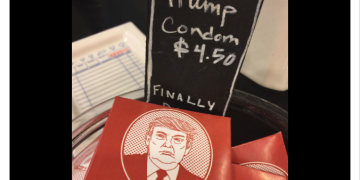H&M Leasing Corp. raised nearly $251,000 for the Orange County Volunteer Firemen”™s Association in 2015 but only $15,000, or 6 percent of the donations, actually went to the cause.
Many professional fundraisers such as H&M keep a significant portion of the charity dollars they raise, according to “Pennies for Charity,” an annual report issued by Attorney General Eric Schneiderman.
“Some of these fundraisers, which are for-profit companies, collect such large fees that little of what they solicit goes to the charity,” Schneiderman said in his 2016 report. “Some also give potential donors misleading information about the charity”™s services, achievements and how much of a given donation the charity actually received and disburses.”
Professional fundraisers kept $379.3 million, almost 35 percent of the funds they raised, to cover the costs of their campaigns in 2015. The New York charities received $718.3 million of nearly $1.1 billion raised.
 The totals were similar in the Hudson Valley, where 50 charities used 27 professional fundraisers in 2015. The campaigns raised $21.6 million and yielded more than $14 million, for a 65 percent return for the charities.
The totals were similar in the Hudson Valley, where 50 charities used 27 professional fundraisers in 2015. The campaigns raised $21.6 million and yielded more than $14 million, for a 65 percent return for the charities.
There were vast differences, however, among fundraising campaigns. Donations kept by the professional fundraisers ranged from 8 percent to 96 percent in the Hudson Valley.
The numbers are based on the attorney general”™s Pennies for Charity database. The state compiled reports on 1,143 fundraising campaigns, including telemarketing, direct mail, email, internet and other fundraising methods. Professional fundraisers must register in New York and disclose their results and the documents are signed by the fundraisers and by the charities.
H&M, based in Copiague on Long Island, raised $339,159 for three charities in the Hudson Valley, according to the state database. It kept $293,799, nearly 87 percent, and turned over $45,360 to the charities. In Nyack, Boy Scouts of America Troop 2, for instance, received $360 out of $8,431, or 4.2 percent, according to the state database.
H&M sells used clothing that it collects in public storage bins. The office was closed when the Business Journal called H&M for a comment and a voicemail message was not returned.
Front Line Support, a Milwaukee company, guaranteed 15 percent of its gross receipts for a telephone solicitation campaign, according to its agreement with the New York State Union of Police Associations in Newburgh. It raised $61,375, kept $52,169 and turned over $9,206 for a 15 percent return to the charity.
No one answered the phone on three attempts to reach someone for comment at Front Line.
InfoCision Management Corp., a call-center company based in Akron, Ohio, raised more money than any other professional fundraiser in the Hudson Valley campaigns – and made a lot for itself. It collected $3.2 million for the Leukemia and Lymphoma Society, headquartered in Rye Brook, and $2.4 million for the March of Dimes in White Plains. The Leukemia charity got back 74 percent, according to the state database, but March of Dimes received only 25 percent of donations.
InfoCision collected $2.6 million on more than $5.5 million in receipts, a 47 percent return for the company.
A spokesman for InfoCision was not available for comment and did not respond to a telephone message.
The state database also reveals the most effective professional fundraisers.
The Leukemia Society also used Outerwall Inc., a company in Bellevue, Washington, that operates Coinstar kiosks where customers convert coins to cash. Coinstar allowed customers to donate cash directly to the Society, directing $5.3 million out of nearly $5.8 million raised to the White Plains nonprofit for a 92 percent return.
Some charities and professional fundraisers have found a way to obscure the true cost of their campaigns, the attorney general reported.
They sidestep regulatory oversight by splitting fundraising and management duties. The firm that solicits the donation and handles the money must report to the state. The firm that provides fundraising “consulting” services is not required to file reports. In some cases, the attorney general said, the fundraiser and consultant are related businesses or even one and the same.
Charities and for-profit fundraisers may not make false, misleading or deceptive statements when soliciting donations. New York requires telemarketers to disclose the name of the fundraiser, the name of the fundraising company and the fact that the telemarketer is being paid to make the call.
The Pennies for Charity report provides several tips for donors.
- Research the charity on its own website, the state”™s Charities Bureau website (charitiesnys.com/) and the Pennies for Charities database charitiesnys.com/RegistrySearch/search_charities.jsp.
- Never donate cash or wire money to any organization. Use a credit card.
- Make online donations only to secure websites that begin with “https.”
- Resist pressure to give on the spot, over the phone. Ask for more information by mail.
- Avoid charities that make emotional appeals and answer your questions vaguely.
- Ask how the donation will be used.
- Report suspicious organizations to the state Charities Bureau: bureau@ag.ny.gov or 212-416-8401.

















